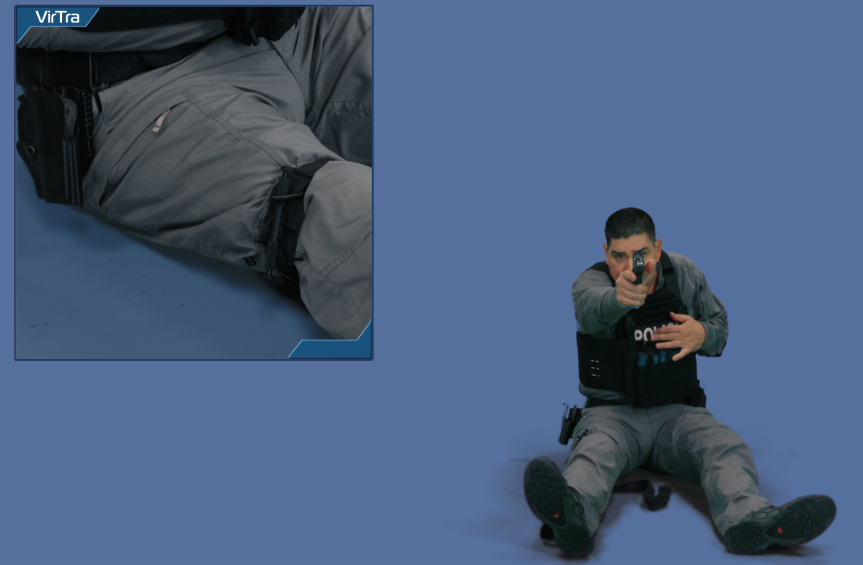Tourniquet Application Under Threat
Certified Tourniquet First Aid Training for Police Officers, Sheriffs and Deputies
Tourniquets are one of the many tools law enforcement officers must master in the training room. This life-saving device applies enough pressure above a limb wound to control bleeding until the victim can receive medical attention. An officer may use a tourniquet on themselves, a partner or a civilian when an incident occurs.
Each tool that an officer has access to should be trained within a realistic yet safe environment before being put to use on the field. Tourniquets are no different, as there are risks, benefits, tips and beneficial advice to be known when it comes to application.
Why Tourniquet Training is Needed
Simulation Tourniquet Application Training for Self and Buddy Application
Law enforcement officers must not only keep themselves safe, but also their partners and civilians in case an emergency arises. Keeping everyone safe is more than knowing how to correctly apply a tourniquet; officers also have to keep their guards up during application, as threats will not wait to attack again. Improperly applying a tourniquet can actually cause additional injuries, so it is important to stay focused in the height of a stressful situation.
With tourniquet training, there are different types of tourniquet systems and departments may vary in the types they equip their police officers with. The common ones are Rapid© Tourniquet (formerly known as R.A.T.S.), C-A-T® and SOF® Tactical (sometimes called SOF-T). There are different methods of application that need to be taught based on the type the agency has chosen through consistent tourniquet first aid training.
In many instances, the use of a tourniquet has been credited to saving lives. One example took place in Holyoke, Massachusetts when a man was shot in the leg during a drive-by shooting. Upon discovering the injured male, a Holyoke PD officer applied a tourniquet while medical attention was in route. Medical experts later said the application of the tourniquet saved the victim’s life. Additionally, tourniquets were used on several occasions after the Boston Marathon Bombing.
How VirTra’s Simulator Does Tourniquet Application Training
See How Effective Law Enforcement Tourniquet Application Training Is Possible
There are two nationally certified courses that VirTra offers for tourniquet application training – Tourniquet Application Under Threat I and II. The first course covers R.A.T.S while the second explains C-A-T and SOF-T. Each tourniquet training course uses a VirTra – Virtual Instructor, also called V-VI™, to guide officers and trainees through the tourniquet application process on-screen.
The tourniquet first aid training course also goes into various lifesaving measures that may supplement the application of a tourniquet, such as autogenic breathing to slow your heart rate, which reduces blood loss. There are also considerations for those with a leg injury who are also carrying a long gun that cannot be secured.
During the V-VI walkthroughs, students are guided through the tourniquet application process for several different injuries, including the primary arm, support arm, lower leg, and thigh. These not only apply to self-application but also to buddy/partner application as well. Each injury and tourniquet application in the tourniquet training scenario requires students to practice slow and controlled application, rapid/full speed application as well as fast application under threat.
Part of the focus is on the multitasking process of applying the tourniquet and making sure law enforcement officers can fight back if the threat is still active. Chances are, if officers are consciously aware they have been shot or stabbed, they have the ability to draw and fire their duty weapon or radio for help. Being able to safely and effectively apply a tourniquet while protecting oneself from an ongoing threat is vital on the field, and our law enforcement tourniquet application training course makes sure that your officers are confident on the field.
Tourniquet Training is Part of VirTra’s Nationally-Certified Officer Curriculum
Certified Curriculum that Prepares Future and Current Law Enforcement
Both of VirTra’s Tourniquet Application Under Threat courses are part of V-VICTA® – VirTra Virtual Interactive Coursework Training Academy. All V-VICTA courses NCP certified by IADLEST. This means each course has passed the rigorous review process and is POST-approved in 36 states. Both courses are 4 hours each, resulting in 8 hours of certified tourniquet first aid training curriculum.
Like other V-VICTA curriculum, Tourniquet Application Under Threat courses include a training manual, instructor notes, testing material, class roster a class survey and more. Additionally, the corresponding V-VI for tourniquet application training gives trainees a walkthrough of the tourniquet application to practice before going into one of the other scenarios where skills will be tested.
To learn more about Tourniquet Application Under Threat and other V-VICTA curriculum, visit our website or contact a VirTra specialist about our tourniquet application training today.
References
Shackelford, S. A., Butler, F. K., Kragh, J. F., Stevens, R. A., Seery, J. M., Parson, D. L. 2014. Optimizing the use of limb tourniquets in tactical casualty care: TCCC guidelines change 14-02. 1-41. https://www.naemt.org/docs/default-source/education-documents/tccc/10-9-15-updates/tccc-change-prop-1402-optimizing-tq-use-141109-jsom. pdf?sfvrsn=2








